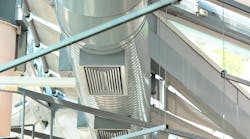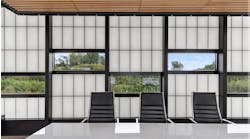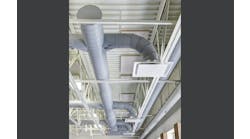The Covid-19 pandemic exposed the vulnerability of school facilities with inadequate heating, ventilation and air-conditioning (HVAC) systems. As the disease spread across the world in 2020, health experts determined that it spread more easily in enclosed spaces with poor ventilation.
Unfortunately, those conditions were commonly found in U.S. education facilities saddled with poorly functioning HVAC systems and substandard indoor air quality (IAQ). A Government Accountability Office report in 2020 estimated that as many as 36,000 of the nation’s 100,000 public school buildings were likely to need HVAC system upgrades or replacement.
Though the pandemic has ended, Covid-19 and its variants still have the potential to cause health problems. "Covid-19 continues to be a major cause of serious respiratory illnesses in the United States," the U.S. Centers for Disease Control and Prevention says.
Taking advantage of the billions of dollars in federal Covid relief funds earmarked for schools, many campuses have begun to replace or upgrade their ventilation systems. Earlier this year, the American Society of Heating, Refrigerating and Air-Conditioning Engineers (ASHRAE) put together a 36-page report, “Design Guidance for Education Facilities: Prioritization for Advanced Indoor Air Quality,” to help schools and universities move forward with their HVAC upgrades.
“IAQ upgrades can improve learning outcomes and mitigate the risk of transmission of airborne pathogens within the educational environment,” the ASHRAE guide says.
Here are some of the recommendations:
Before pursuing an upgrade, schools should perform a physical assessment of existing HVAC infrastructure and provide a written condition assessment. This baseline assessment must be performed by a skilled, trained, and certified technician, ASHRAE says.
- Document filter Minimum Efficiency Reporting Value (MERV) values and ensure proper installation with minimum bypass air.
- Physically verify and document ventilation rates.
- Physically verify demand control ventilation (DCV) operates as intended.
Improving filtration
“By improving the filtration in the air handlers, it is possible to decrease the chance of aerosolized viral particles being spread through the air distribution system,” the guide says.
- Assess existing filtration levels and create an inventory of existing filtration efficiency.
- Assess ventilation system capacity for higher levels of filtration, including motor and physical dimensions of air handlers.
- Apply the highest MERV filter for the HVAC units given limitations with increased pressure drop. MERV 13 is the recommended minimum.
- Verify airflows after filtration level changes.
- Monitor loading pattern on filters after changes and adjust filter change schedules to meet new loading patterns.
- Label all filters with the manufacturer’s name showing the MERV rating and date of filter change.
Classroom air
In a classroom, any occupant may potentially be an infector. Given that the potential infector could be anywhere in the room, the best applied strategy should ensure there are no direct drafts that could concentrate infectious aerosols, ASHRAE says.
• Ensure air grilles and diffusers are in good operating condition and are not configured in such a way that will create drafts.
• For modifications or new distribution systems, follow ASHRAE/IES Standard 90.1, which limits discharge temperature to 20°F (11°C) above room temperature.
• Design intent should minimize cross-flow between occupants but maximize room volume dilution.
• Review the impact of temporary dividers on air distribution to avoid creation of drafts and concentrations of flow.
New systems
New HVAC systems should be designed to comply with the most current adopted mechanical and building codes within the jurisdiction where the facility is situated, including the code-required minimum ventilation standard, the guide says.
- Design systems so that they provide well-mixed air. Avoid air velocities that create drafts or create airflow across or from one occupant to another.
- A system should perform three to six air changes per hour (ACH) during occupied periods. The maximum should be based on design loads.
- Reduced volume during unoccupied periods is acceptable to conform to energy code requirements.
- Consider air cleaners with HEPA filtration to supplement ventilation systems and distribution design to ensure minimum space air change levels are met. This can include multiple air cleaners positioned to best provide air cleaning.
- Design systems for maximum 40 decibels in classrooms
Restrooms
"Restrooms present a challenge and risk in most schools," ASHRAE says. "With the configuration of most restrooms, it is not possible to maintain social distancing requirements and the spaces are higher traffic."
- Ensure that all washroom fans are operating correctly and confirm that air volumes are in accordance with ASHRAE Standard 62.1.
- Ensure that washroom exhaust systems are operating continuously during occupied periods and before and after the primary occupancy period.
- Ensure that doors opening and closing will not negatively affect airflows in the washroom. This is relevant where the washroom depends on transfer air.


